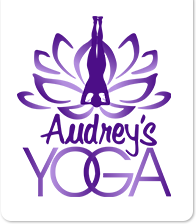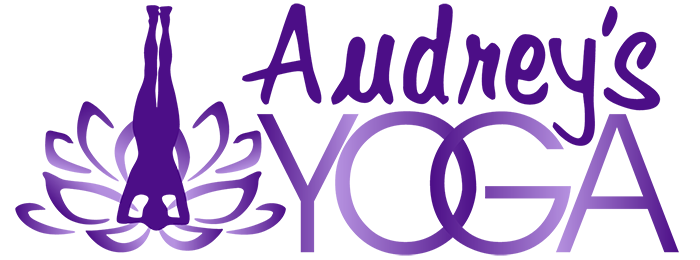Attachment, Aversion, and Fear (of Death)

Change is inevitable, yet we all resist it at some point, especially if it is forced upon us without choice. This blog post was going to be on ‘Finding Balance’, but there were too many “signs” coming to me that it should be on the Kleshas and how they are present in times of big life changes. The first sign was when I read an email from one of my teachers, Alexandria Crow, on the Kleshas and how the mini-lesson resonated with me. The second sign is the reason the email resonated with me so much is that I will be experiencing another new change in my life. After 25 years of living and working overseas, my husband and I will be headed back to the USA at the beginning of 2023. As I read and listened to Alexandria, it became more and more clear that I needed to write about my experience with the Kleshas this month.
What are the Kleshas? They are part of the philosophy of yoga. Part of the practice is both on and off the mat. Here is a brief overview from Alexandria Crow:
The Kleshas are a set of concepts that help us understand the afflictions, which cause us suffering and block our yoga path. Not our path to the poses, the path to yoga at its core, which is about remembering your inherent wholeness and understanding that you are more than your body and nothing about you needs to be fixed.
The first Klesha is ignorance or confusion. When we’re born, we are disconnected from our true selves. Instead, we become our body, our capabilities, and our beliefs—in essence, we begin to believe that everything that is impermanent is instead permanent. When this happens, we forget that we are infinite and whole.
The second is ego—the beliefs and preferences that you develop as a person in this world. Once that ego has developed (and it does for all of us!) it acts as a magnet, pulling us toward our attractions and pushing away things that challenge it.
The third is passionate attachment, our tendency to cling to patterns because they are familiar even when they are unhealthy or counterproductive for us.
The fourth is aversion. Just as we cling to what we’re used to, we push away what we don’t know. Because we are afraid of the suffering we perceive will come from change, we deny ourselves the opportunity to grow and evolve.
The fifth and essential Klesha is the aversion to death. That’s actually what lies at the heart of all our attachment and aversion. Since we have forgotten that we are infinite, we hang on to what’s familiar and predictable out of the mistaken idea that it will keep us safe from death.
Maybe as you were reading about the Kleshas a situation in the present or from the past came up that you could relate to and applied the Kleshas without even really noticing.
Here is a poem that demonstrates evolving away from affliction, aversion, and fear.
Autobiography in Five Chapters
by Portia Nelson
I
I walk down the street.
There is a deep hole in the sidewalk
I fall in.
I am lost...
I am hopeless.
It isn't my fault.
It takes forever to find a way out.
II
I walk down the same street.
There is a deep hole in the sidewalk.
I pretend I don't see it.
I fall in again.
I can't believe I'm in the same place.
But it isn't my fault.
It still takes a long time to get out.
III
I walk down the same street.
There is a deep hole in the sidewalk.
I see it is there.
I still fall in...it's a habit
My eyes are open; I know where I am;
It is my fault.
I get out immediately.
IV
I walk down the same street.
There is a deep hole in the sidewalk.
I walk around it.
V
I walk down another street.
It is normal to become upset and resistant to change that is put upon you without choice. Understanding that this is part of your yoga journey and you work through the Kleshas can help you find greater freedom and ease as you move “to get out of the hole”.
Try this short mental exercise to notice the Kleshas at work for you:
1) Sit and imagine a pose you are proud of. One that you have been working hard toward and now feel pride in when you can practice it. If you do not have one yet, think of one you are working towards. For me, it is a Headstand.
2) Imagine how you FEEL when doing this pose while working into this pose, and after completing the pose. Feel the emotions, maybe the physical shifts with just imagining it.
3) Now, imagine you are no longer able or allowed to do this pose. How does that FEEL? What emotions or reactions come up in the body and mind? Is there anger, fear, anxiety, heat, or confusion? Or is there a general sadness, but acceptance? I’d love to hear your thoughts on this exercise.
Not being able to do a headstand would affect me, mentally and physically, as I feel a deep connection with that pose on many levels. While I would be sad, I also understand that I'm more than that pose, inside and out, and that pose does not define me as it represents me in my logo.
Taking this exercise to a zoomed-out level: I very much enjoy my life here in the desert and have enjoyed the ease of it as well as the habits of my daily life. The thought of leaving and giving all that up for the unknown was hard for me. I was experiencing the first 3 Kleshas all at once: 1) I was doubting that I could teach outside of this community - believing I could never find another amazing yoga community, 2) my Ego wanted to stay and I debated with my husband about staying longer - repelling the challenges that lay ahead for us, 3) I love the comfort in the familiar, a schedule, good habits and this move was making me cling more and more to my schedule. I still have waves of the first three, but since I have become more aware of what is happening, I can acknowledge my emotions without getting caught up in them finding less aversion from change (the fourth Klesha) and knowing in my heart and mind I will not die from this big change in my life (the fifth Klesha). I’m starting to look forward (with little waves of panic still coming and going) to the changes that will come with the move to see where my yoga path will take me next.
Getting involved with a yoga practice involves identifying when the Kleshas are active and knowing how to respond is a great tool to help move past these afflictions of the Kleshas, to have less suffering and more understanding that nothing is permanent. Knowing what you’re attached to and stepping back to inspect how that attachment plays out in your life is the first step on the path toward greater freedom and ease.




